Month: July 2022
On The Late Sam Gilliam
Richard J. Powell at Artforum:
 ALTHOUGH the more-than-a-half-century career of abstract painter Sam Gilliam was universally recognized and expansive in its reach, his studio and home were in Washington, D.C., which the art world was late to recognize as a place for innovative art and shape-shifting artists. Despite the history surrounding the genesis and development of the Washington Color School—chronicles that include such luminaries as critic Clement Greenberg and painters Morris Louis and Kenneth Noland—the reputation of the nation’s capital for nurturing leading-edge visual artists pales in comparison to cities like New York, Chicago, and Los Angeles. And yet Sam Gilliam’s groundbreaking creations, from his draped canvases to his acrylic-laden structures, cannot be separated from the town that, until recently, was euphemistically referred to as Chocolate City, a setting with an idiosyncratic, generative mixture of bureaucratic precedent, cosmopolitan rapprochement, and African American artistry.
ALTHOUGH the more-than-a-half-century career of abstract painter Sam Gilliam was universally recognized and expansive in its reach, his studio and home were in Washington, D.C., which the art world was late to recognize as a place for innovative art and shape-shifting artists. Despite the history surrounding the genesis and development of the Washington Color School—chronicles that include such luminaries as critic Clement Greenberg and painters Morris Louis and Kenneth Noland—the reputation of the nation’s capital for nurturing leading-edge visual artists pales in comparison to cities like New York, Chicago, and Los Angeles. And yet Sam Gilliam’s groundbreaking creations, from his draped canvases to his acrylic-laden structures, cannot be separated from the town that, until recently, was euphemistically referred to as Chocolate City, a setting with an idiosyncratic, generative mixture of bureaucratic precedent, cosmopolitan rapprochement, and African American artistry.
more here.
The Ruins of Christendom
Brad East at the LARB:
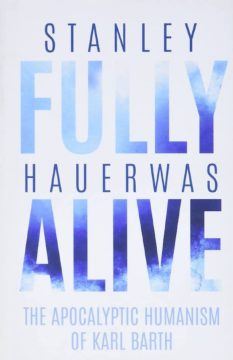 THIS YEAR STANLEY Hauerwas turns 82 years old. To mark the occasion, he has published a book on Karl Barth, who died at the same age in 1968. The timing as well as the pairing is fitting. Barth is the greatest Protestant theologian of the 20th century, and probably the most widely read of any theologian over the last 100 years. As for Hauerwas, since the passing of Reinhold Niebuhr in 1971, he has been the most prolific, influential, and recognizable Christian theological thinker in American public life. Barth somehow graced the cover of Time magazine in 1962, even though he was a Swiss Calvinist whose books on technical theology are so thick they could stop bullets. Hauerwas has never made the cover, but in 2001 Time did call him “America’s best theologian.” That fall, Oprah even invited him onto her show. In short, given Hauerwas’s age and stature, Fully Alive: The Apocalyptic Humanism of Karl Barth has the inevitable feel of a valediction.
THIS YEAR STANLEY Hauerwas turns 82 years old. To mark the occasion, he has published a book on Karl Barth, who died at the same age in 1968. The timing as well as the pairing is fitting. Barth is the greatest Protestant theologian of the 20th century, and probably the most widely read of any theologian over the last 100 years. As for Hauerwas, since the passing of Reinhold Niebuhr in 1971, he has been the most prolific, influential, and recognizable Christian theological thinker in American public life. Barth somehow graced the cover of Time magazine in 1962, even though he was a Swiss Calvinist whose books on technical theology are so thick they could stop bullets. Hauerwas has never made the cover, but in 2001 Time did call him “America’s best theologian.” That fall, Oprah even invited him onto her show. In short, given Hauerwas’s age and stature, Fully Alive: The Apocalyptic Humanism of Karl Barth has the inevitable feel of a valediction.
more here.
Not Thinking Like a Liberal
Robert Paul Wolff in his own blog:
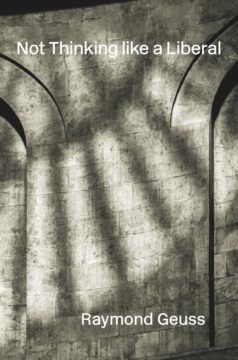 Several days ago, I received from Raymond Geuss a copy of his new book, Not Thinking like a Liberal, which has just been published by Harvard. It is an intense, complex, deeply interior account of his philosophical development first as a boy in a Catholic private school and then as an undergraduate and graduate student at Columbia University. Geuss, as I am sure you all know, is a distinguished philosopher now retired from Cambridge University, the author of a number of books.
Several days ago, I received from Raymond Geuss a copy of his new book, Not Thinking like a Liberal, which has just been published by Harvard. It is an intense, complex, deeply interior account of his philosophical development first as a boy in a Catholic private school and then as an undergraduate and graduate student at Columbia University. Geuss, as I am sure you all know, is a distinguished philosopher now retired from Cambridge University, the author of a number of books.
Geuss and I come from backgrounds so different from one another that it is hard to believe we could ever inhabit the same world and yet, for a span of time in the 1960s and a little bit beyond, our lives intersected on the seventh floor of Philosophy Hall at Columbia University. Geuss arrived at Columbia as a 16-year-old freshman in 1963, graduated summa cum laude, and earned his doctorate in the philosophy department in 1971. I joined the philosophy department as an associate professor in 1964 and resigned my professorship to go to the University of Massachusetts in 1971. Both of us took the year 1967 – 68 off from Columbia, I to teach at Rutgers while continuing to live across the street from the Columbia campus and he to spend the year in Germany.
In this book, Ray gives an intense contemplative complexly thought through account of the life process by which he arrived eventually at the condition he describes as “not thinking like a liberal,” beginning with his education at a Catholic boarding school outside of Philadelphia staffed in large part by Hungarian priests who had fled the communist regime.
More here.
What Can Menstrual Blood Reveal about Health and Disease?
Emma Yasinski in Undark:
 It’s “appalling” that more scientists — whether they’re studying endometriosis or not — aren’t studying menstrual blood, which contains a combination of blood and tissue that lines the uterus, said Metz. Researchers routinely examine saliva, mouth tissue, skin, and even teeth, looking for clues about health and disease. By contrast, said Metz, menstrual effluent has been neglected.
It’s “appalling” that more scientists — whether they’re studying endometriosis or not — aren’t studying menstrual blood, which contains a combination of blood and tissue that lines the uterus, said Metz. Researchers routinely examine saliva, mouth tissue, skin, and even teeth, looking for clues about health and disease. By contrast, said Metz, menstrual effluent has been neglected.
Metz is one of a handful of scientists worldwide studying menstrual blood; these researchers are looking into its potential as a diagnostic marker for diabetes, gynecologic diseases, and even toxic exposures. Because the work is still new, it could be years, even decades, before any findings influence clinical care. For now, however, the researchers are challenging the conventional view that menstrual blood is merely a waste product. Instead, they said, careful examination of this biological specimen may yield important insights into health and disease.
More here.
Wars are won by people willing to fight for comrade and cause
Scott Atran in Aeon:
 Throughout history, the most effective combatants, revolutionaries and insurgents have been ‘devoted actors’ fused together by dedication to non-negotiable ‘sacred values’ such as God, country or liberty. Military incursions nearly always plan for maximum force at the beginning to ensure victory. But if defenders resist, or are allowed to recoup, then the advantage often shifts to those with the will to fight as they increasingly harness resources against their attackers who are maxed-out in terms of what they are able, or willing, to commit: consider Napoleon and then Hitler and their onslaught against Russia, or the United States’ invasions of Iraq and Afghanistan. Throughout history, those willing to sacrifice for cause and comrades, and for their leaders, have often prevailed against more powerful forces that mainly rely on material incentives such as pay and punishment.
Throughout history, the most effective combatants, revolutionaries and insurgents have been ‘devoted actors’ fused together by dedication to non-negotiable ‘sacred values’ such as God, country or liberty. Military incursions nearly always plan for maximum force at the beginning to ensure victory. But if defenders resist, or are allowed to recoup, then the advantage often shifts to those with the will to fight as they increasingly harness resources against their attackers who are maxed-out in terms of what they are able, or willing, to commit: consider Napoleon and then Hitler and their onslaught against Russia, or the United States’ invasions of Iraq and Afghanistan. Throughout history, those willing to sacrifice for cause and comrades, and for their leaders, have often prevailed against more powerful forces that mainly rely on material incentives such as pay and punishment.
More here.
Ram Manikkalingam on the dangers Sri Lanka faces now
Good Grief
Joseph Epstein in Commentary:
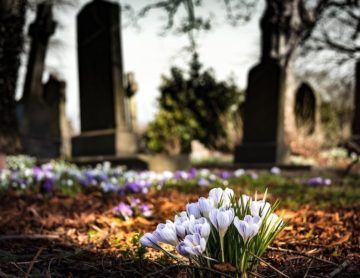 Fortunate is the person who has reached the age of 50 without having had to grieve. To be among the grieving, the bereaved, is an experience most of us go through, excepting only those who die preternaturally young and are themselves the cause of bereavement. The death of a parent, a husband or wife, a brother or sister, a dear friend, in some ways saddest of all, a child, is among the major causes of grief. May grief be avoided? Ought it to be? Is there any sense in which, as Charlie Brown’s favorite phrase had it, there is good grief?
Fortunate is the person who has reached the age of 50 without having had to grieve. To be among the grieving, the bereaved, is an experience most of us go through, excepting only those who die preternaturally young and are themselves the cause of bereavement. The death of a parent, a husband or wife, a brother or sister, a dear friend, in some ways saddest of all, a child, is among the major causes of grief. May grief be avoided? Ought it to be? Is there any sense in which, as Charlie Brown’s favorite phrase had it, there is good grief?
Socrates held that one of the key missions of philosophy was to ward off our fear of death. Upon his own death, by self-imposed hemlock, he claimed to be looking forward at long last to discovering whether there was an afterlife. Montaigne wrote an essay called “To Philosophize Is to Learn How to Die,” in which, as elsewhere in his essays, he argues that, far from putting death out of mind, we should keep it foremost in our minds, the knowledge of our inevitably forthcoming death goading us on the better to live our lives.
More here.
Stunning new Webb images: baby stars, colliding galaxies and hot exoplanets
Alexandra Witz in Nature:
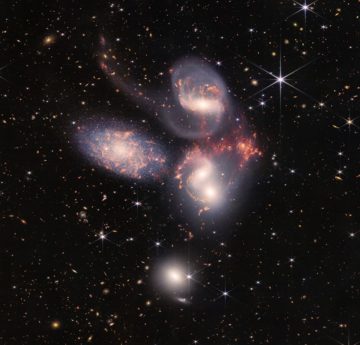 The views of the Universe just keep getting better. NASA’s US$10-billion James Webb Space Telescope released four new scientific images on 12 July, including newborn stars sparkling through dramatic ‘cliffs’ of gas, and galaxies interacting in an intricate cosmic dance. A day earlier, astronomers had marveled at its very first image, a mind-boggling deep dive into the distant Universe.
The views of the Universe just keep getting better. NASA’s US$10-billion James Webb Space Telescope released four new scientific images on 12 July, including newborn stars sparkling through dramatic ‘cliffs’ of gas, and galaxies interacting in an intricate cosmic dance. A day earlier, astronomers had marveled at its very first image, a mind-boggling deep dive into the distant Universe.
Webb observes the cosmos in infrared wavelengths, which gives it a different view than many other observatories, such as the Hubble Space Telescope. Webb’s 6.5-metre-wide mirror is the largest ever launched into space, and the combination of the large mirror and its infrared detection capabilities allow Webb an unprecedented view of many astronomical phenomena. That includes stars and shock waves generated as galaxies collide in the group of five known as Stephan’s Quintet, 90 million parsecs away in the constellation Pegasus. The images that Webb collected of the galaxy grouping reveal millions of young stars forming as gas and dust collide, as well as sweeping tails left by one of the galaxies, NGC 7318B, as it storms its way through the cluster. “It really shows the type of interaction that drives the evolution of galaxies,” says Giovanna Giardino, an astronomer with the European Space Agency.
More here.
Wednesday Poem
I Was Reading a Scientific Article
They have photographed the brain
and here is the picture, it is full of
branches as I always expected,
each time you arrive the electricity
of seeing you is a huge
tree lumbering through my skull, the roots waving.
It is an earth, its fibers wrap
things buried, your forgotten words
are graved in my head, an intricate
red blue and pink prehensile chemistry
veined like a leaf
network, or is it a seascape
with corals and shining tentacles.
I touch you, I am created in you
somewhere as a complex
filament of light
by Margaret Atwood
from Margaret Atwood Selected Poems
Oxford University Press, 1976
The World as a Game
Justin E. H. Smith in Liberties:
 What is a game? Ludwig Wittgenstein famously chose this nebulous concept to illustrate what he meant by “family resemblance,” where the individual members of a class can be determined to fulfill no necessary and sufficient conditions for admission, and instead only share some traits with some others in the class, others with others. Yet we can at least identify two types of game, which seem not just distinct from one another but very nearly opposite. One class of games, which includes peek-a-boo, charades, and musical improvisation as representative instances, is characterized by free expressivity. It is the manifestation of what Friedrich Schiller called the Spieltrieb, the “play-drive,” which is innate in all human beings insofar as they are free. The other class includes chess, fencing, and wargames as its representative instances. If there is still some dose of freedom operating in this sort of game, it is freedom under severe constraints. The purpose here is to win, and one does so by means of strategy aforethought. In such games, serendipity and spontaneity are disadvantages. While some such games may, like Schillerian free play, be “fun” (especially when you win and the other guy loses), at their outer edge they shade over into a domain of human endeavor that has little to do with leisure at all. At their most serious they can determine the fate of the world.
What is a game? Ludwig Wittgenstein famously chose this nebulous concept to illustrate what he meant by “family resemblance,” where the individual members of a class can be determined to fulfill no necessary and sufficient conditions for admission, and instead only share some traits with some others in the class, others with others. Yet we can at least identify two types of game, which seem not just distinct from one another but very nearly opposite. One class of games, which includes peek-a-boo, charades, and musical improvisation as representative instances, is characterized by free expressivity. It is the manifestation of what Friedrich Schiller called the Spieltrieb, the “play-drive,” which is innate in all human beings insofar as they are free. The other class includes chess, fencing, and wargames as its representative instances. If there is still some dose of freedom operating in this sort of game, it is freedom under severe constraints. The purpose here is to win, and one does so by means of strategy aforethought. In such games, serendipity and spontaneity are disadvantages. While some such games may, like Schillerian free play, be “fun” (especially when you win and the other guy loses), at their outer edge they shade over into a domain of human endeavor that has little to do with leisure at all. At their most serious they can determine the fate of the world.
It is this latter sort of game alone that machines are capable of “understanding.”
More here.
Sean Carroll’s Mindscape Podcast: N.J. Enfield on Why Language is Good for Lawyers and Not Scientists
Sean Carroll in Preposterous Universe:
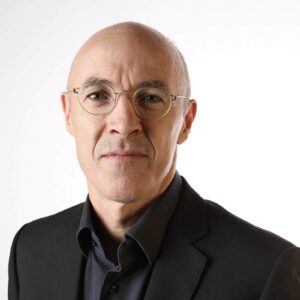 We describe the world using language — we can’t help it. And we all know that ordinary language is an imperfect way of communicating rigorous scientific statements, but sometimes it’s the best we can do. Linguist N.J. Enfield argues that the difficulties run more deeply than we might ordinarily suppose. We use language as a descriptive tool, but its origins are found in more social practices — communicating with others to express our feelings and persuade them to agree with us. As such, the very structure of language itself reflects these social purposes, and we have to be careful not to think it provides an unfiltered picture of reality.
We describe the world using language — we can’t help it. And we all know that ordinary language is an imperfect way of communicating rigorous scientific statements, but sometimes it’s the best we can do. Linguist N.J. Enfield argues that the difficulties run more deeply than we might ordinarily suppose. We use language as a descriptive tool, but its origins are found in more social practices — communicating with others to express our feelings and persuade them to agree with us. As such, the very structure of language itself reflects these social purposes, and we have to be careful not to think it provides an unfiltered picture of reality.
More here.
Wide-ranging interview with writer Mohammed Hanif
David Wengrow and the trouble with rewriting human history
Andrew Anthony in The Guardian:
 Last year a book called The Dawn of Everything announced that most of what we think we know about human history is wrong. Its co-authors, David Graeber and David Wengrow, took aim at the established story that has been repeated by brand writers such as Jared Diamond, Yuval Noah Harari and Steven Pinker – the one that says that for most of prehistory, we lived in small egalitarian bands of hunter-gatherers, and it was only with the agricultural revolution about 12,000 years ago that we adopted larger forms of social organisation leading to complex, hierarchical communities. All of that, they argue, is based on outdated information.
Last year a book called The Dawn of Everything announced that most of what we think we know about human history is wrong. Its co-authors, David Graeber and David Wengrow, took aim at the established story that has been repeated by brand writers such as Jared Diamond, Yuval Noah Harari and Steven Pinker – the one that says that for most of prehistory, we lived in small egalitarian bands of hunter-gatherers, and it was only with the agricultural revolution about 12,000 years ago that we adopted larger forms of social organisation leading to complex, hierarchical communities. All of that, they argue, is based on outdated information.
In their bestselling books Collapse, Sapiens and The Better Angels of Our Nature, those authors drew heavily on archaeological and anthropological findings, although none of them are archaeologists or anthropologists. By contrast Graeber, who died two years ago, was thought by many to be one of the leading anthropologists of his generation. And co-author Wengrow is a well-respected archaeologist.
More here.
Miles Davis with John Coltrane- March 21, 1960
On Gone with the Wind
Alex Von Tunzelmann at Literary Review:
 The screen version of Gone with the Wind could not entirely ignore the existence of black people, so it toned down the book’s racist language as well as some of its racial violence. There is a degree of irony in Scarlett, whose ‘magnolia skin’ is heavily fetishised, being played by Vivien Leigh, who probably had Indian ancestry. The producer, David Selznick, and Leslie Howard, who played Scarlett’s first love, Ashley Wilkes, were both of Jewish origin. Howard, says Churchwell, ‘categorically refused to read Gone with the Wind’. Most notably, though, the film’s black cast had to be persuaded to work on a white supremacist project. Hattie McDaniel, who won an Oscar for her performance as Scarlett’s maid, Mammy, was born to parents who had both once been enslaved. Her father was a veteran of the Union Army who had fought in the Civil War. McDaniel insisted she had taken the role for the money: ‘she had chosen between $700 a week to play a maid, or $7 a week to be a maid.’ Yet she and Butterfly McQueen, who played Prissy, must have cared a bit about what they were doing. Both lobbied to have one of the novel’s most-used words – rendered by Churchwell as ‘nxxxxr’ – excised completely from the screenplay. Eventually it was, though only after Selznick struck a deal with the censors to eliminate it in return for being allowed to keep Rhett Butler’s final ‘damn’.
The screen version of Gone with the Wind could not entirely ignore the existence of black people, so it toned down the book’s racist language as well as some of its racial violence. There is a degree of irony in Scarlett, whose ‘magnolia skin’ is heavily fetishised, being played by Vivien Leigh, who probably had Indian ancestry. The producer, David Selznick, and Leslie Howard, who played Scarlett’s first love, Ashley Wilkes, were both of Jewish origin. Howard, says Churchwell, ‘categorically refused to read Gone with the Wind’. Most notably, though, the film’s black cast had to be persuaded to work on a white supremacist project. Hattie McDaniel, who won an Oscar for her performance as Scarlett’s maid, Mammy, was born to parents who had both once been enslaved. Her father was a veteran of the Union Army who had fought in the Civil War. McDaniel insisted she had taken the role for the money: ‘she had chosen between $700 a week to play a maid, or $7 a week to be a maid.’ Yet she and Butterfly McQueen, who played Prissy, must have cared a bit about what they were doing. Both lobbied to have one of the novel’s most-used words – rendered by Churchwell as ‘nxxxxr’ – excised completely from the screenplay. Eventually it was, though only after Selznick struck a deal with the censors to eliminate it in return for being allowed to keep Rhett Butler’s final ‘damn’.
more here.
Why Write?
Elisa Gabbert at The Paris Review:
 Nabokov spoke of shimmers too. “Literature was born on the day when a boy came crying wolf, wolf and there was no wolf behind him,” he said in a lecture in 1948. “Between the wolf in the tall grass and the wolf in the tall story, there is a shimmering go-between.” In this view, it seems to me, the writer’s not the wraith who can pass between realms of reality and fantasy. The art itself is the wraith, which the artist only grasps at. Elsewhere, Nabokov writes that inspiration comes in the form of “a prefatory glow, not unlike some benign variety of the aura before an epileptic attack.” In his Paris Review interview, Martin Amis describes the urge to write this way: “What happens is what Nabokov described as a throb. A throb or a glimmer, an act of recognition on the writer’s part. At this stage the writer thinks, Here is something I can write a novel about.” Amis also saw images, a sudden person in a setting, as if a pawn had popped into existence on a board: “With Money, for example, I had an idea of a big fat guy in New York, trying to make a film. That was all.” Likewise for Don DeLillo: “The scene comes first, an idea of a character in a place. It’s visual, it’s Technicolor—something I see in a vague way. Then sentence by sentence into the breach.” For these writers that begin from something like hallucination, the novel is a universe that justifies the image, a replica of Vegas to be built out of words.
Nabokov spoke of shimmers too. “Literature was born on the day when a boy came crying wolf, wolf and there was no wolf behind him,” he said in a lecture in 1948. “Between the wolf in the tall grass and the wolf in the tall story, there is a shimmering go-between.” In this view, it seems to me, the writer’s not the wraith who can pass between realms of reality and fantasy. The art itself is the wraith, which the artist only grasps at. Elsewhere, Nabokov writes that inspiration comes in the form of “a prefatory glow, not unlike some benign variety of the aura before an epileptic attack.” In his Paris Review interview, Martin Amis describes the urge to write this way: “What happens is what Nabokov described as a throb. A throb or a glimmer, an act of recognition on the writer’s part. At this stage the writer thinks, Here is something I can write a novel about.” Amis also saw images, a sudden person in a setting, as if a pawn had popped into existence on a board: “With Money, for example, I had an idea of a big fat guy in New York, trying to make a film. That was all.” Likewise for Don DeLillo: “The scene comes first, an idea of a character in a place. It’s visual, it’s Technicolor—something I see in a vague way. Then sentence by sentence into the breach.” For these writers that begin from something like hallucination, the novel is a universe that justifies the image, a replica of Vegas to be built out of words.
more here.
How to Read English in India
Akshya Saxena in LA Review of Books:
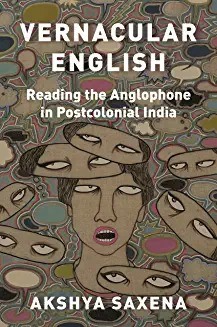 AS SOMEONE WHO grew up in India in the early 2000s, after the once-colonized country had opened itself to the global economy, one thing was clear to me. Aspiration and English were synonymous. Both were essential. This lesson was drilled into me at my missionary-run English-medium high school in New Delhi. Whether we dreamed of becoming doctors or engineers or corporate hotshots, we were repeatedly told that we needed to have English. Students were penalized for speaking in any language other than English, and our pronunciations were disciplined in preparation for roles no one doubted we would take on. Away from the institutional ear, my peers and I still cherished our other languages, to varying degrees. But, for the most part, we learned to joke, dream, rebel, and obey in English.
AS SOMEONE WHO grew up in India in the early 2000s, after the once-colonized country had opened itself to the global economy, one thing was clear to me. Aspiration and English were synonymous. Both were essential. This lesson was drilled into me at my missionary-run English-medium high school in New Delhi. Whether we dreamed of becoming doctors or engineers or corporate hotshots, we were repeatedly told that we needed to have English. Students were penalized for speaking in any language other than English, and our pronunciations were disciplined in preparation for roles no one doubted we would take on. Away from the institutional ear, my peers and I still cherished our other languages, to varying degrees. But, for the most part, we learned to joke, dream, rebel, and obey in English.
Everyone agreed that English was A Good Thing to Have. I heard similar ideas about the importance of English at home as well. My father, raising daughters in a country that did not value women, encouraged my sister and me to speak in English, and beamed with pride when we did. This expectation felt awkward — absurd, even — because English was not a language the other women in our family shared.
More here.
First Webb Space Telescope Image
From The New York Times:
 In a brief event at the White House on Monday evening, President Biden unveiled an image that NASA and astronomers hailed as the deepest view yet into our universe’s past. The image, taken by the James Webb Space Telescope — the largest space telescope ever built — showed a distant patch of sky in which fledgling galaxies were burning their way into visibility just 600 million years after the Big Bang. “This is the oldest documented light in the history of the universe from 13 billion — let me say that again, 13 billion — years ago,” Mr. Biden said. The president, who apologized for beginning the event tardily, praised NASA for its work that enabled the telescope and the imagery it will produce. “We can see possibilities no one has ever seen before,” Mr. Biden said. “We can go places no one has ever gone before.”
In a brief event at the White House on Monday evening, President Biden unveiled an image that NASA and astronomers hailed as the deepest view yet into our universe’s past. The image, taken by the James Webb Space Telescope — the largest space telescope ever built — showed a distant patch of sky in which fledgling galaxies were burning their way into visibility just 600 million years after the Big Bang. “This is the oldest documented light in the history of the universe from 13 billion — let me say that again, 13 billion — years ago,” Mr. Biden said. The president, who apologized for beginning the event tardily, praised NASA for its work that enabled the telescope and the imagery it will produce. “We can see possibilities no one has ever seen before,” Mr. Biden said. “We can go places no one has ever gone before.”
…One of the most ambitious of the Webb telescope’s missions is to study some of the first stars and galaxies that lit up the universe soon after the Big Bang 14 billion years ago. Although Monday’s snapshot might not have reached that far, it proved the principle of the technique and hinted at what more is to come from the telescope’s scientific instruments, which astronomers have waited decades to bring online. As the telescope “gathers more data in the coming years, we will see out to the edge of the Universe like never before,” said Priyamvada Natarajan, of Yale University, an expert on black holes and primeval galaxies, in an email from India. She added, “It is beyond my wildest imagination to be alive when we get to see out to the edge of black holes, and the edge of the universe.”
More here.
Tuesday Poem
Under den Linden No More
Two basswood trees
Two basswood trees of four original
stood for many years in front of my house
their summer blossoms perfuming the avenue
these American Linden trees
in their Old World varietals
these American Linden trees sacred to so many
their summer blossoms perfuming the avenue
my earliest memories
could not withstand the assault of PSE&G
could not withstand the assault of PSE&G
their branches chopped brutally
over the years
Chateaubriand would have noted their size
and now
cut down
these two basswood trees
are completely cut down
cut down
their stumps
their stumps ground down
splinters
now
by John J. Trause
from The Rutherford Red Wheelbarrow, #3, 2010
